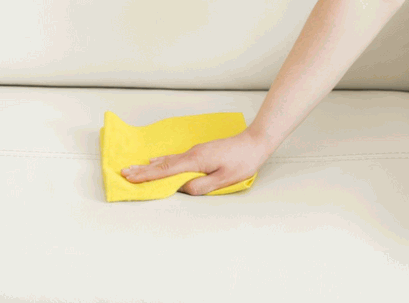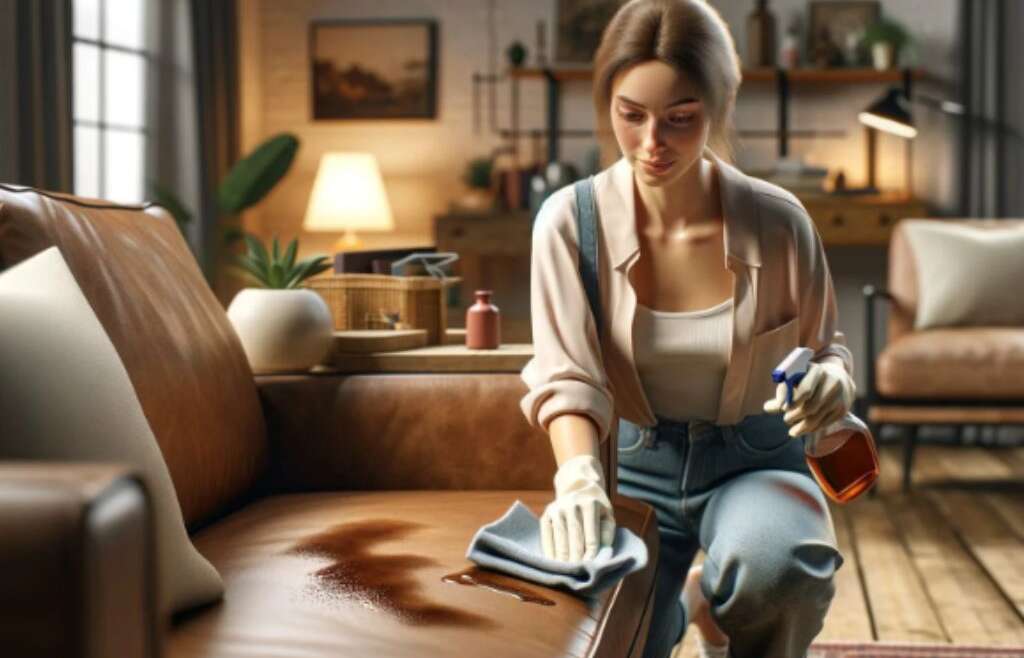Are you the proud owner of a leather sofa, couch, or other leather upholstery but unsure about its care and maintenance? Understanding the type of leather your sofa is made from is the first step to keeping it looking pristine.
This guide will help you identify different leather types, essential maintenance tips, and effective cleaning solutions, including those for commercial leather products.
Learn how to protect your investment from stains, scratches, and other damaging effects, ensuring it remains a beautiful centerpiece in your home for years to come.
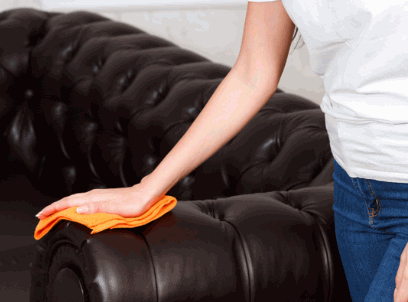
What Type Of Leather Is My Sofa Made Of?
This guide will also reference advice from experts. Identifying the type of leather your sofa is made of is crucial for maintaining its appearance and longevity. Leather can be classified into several categories, including aniline, pigmented, and protected leather, each offering different qualities and care requirements. Aniline leather, known for its natural look and softness, is less resistant to stains compared to pigmented leather, which is treated for durability and stain resistance. Protected leather offers another layer of resilience. Commercial leather options, such as those found in Hess leather sofas or Room & Board products, also vary in maintenance needs, making it vital to understand your sofa’s specific composition before applying any cleaning or conditioning treatments.
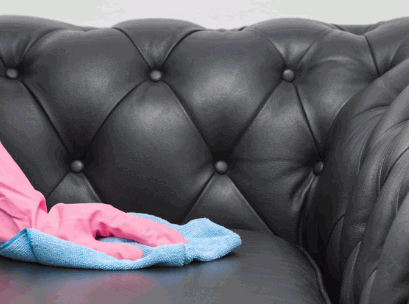
How To Identify Different Types Of Leather
To identify different types of leather, it is essential to understand the distinguishing features of aniline, pigmented leather, and protected leather, which can affect the cleaning and conditioning methods. Aniline leather is typically softer and more natural-looking, while pigmented leather offers greater protection against stains and wear. Utilizing simple testing methods, such as observing the surface texture and performing a water droplet test, can help you determine the type of leather you are dealing with. For instance, if water beads on the surface, it may indicate a pigmented finish, while absorption suggests aniline leather.
Both types of leather cater to different needs, influencing the care techniques employed for maintenance. Additionally, commercial leather products might require specific cleaning products from reputable brands.
- Aniline leather requires more specialized care, often needing a gentle touch, as traditional cleaning agents can strip its natural oils and beauty.
- Conversely, pigmented leather is sturdier and can withstand harsher cleaning products without substantial damage, making it easier to maintain in high-traffic areas.
For identification, a few simple tests are helpful:
| Type of Leather | Surface Test | Journal of Care |
|---|---|---|
| Aniline | Soft, absorbing water | Use gentle cleaners and conditioners |
| Pigmented | Water beads, more resilient | Can utilize stronger cleaners |
Understanding these differences can guide you in selecting the right products, ensuring your leather items remain beautiful and well-preserved for years to come.
Explore further: How To Care A Faux Leather Shoes
Basic Maintenance For Leather Sofas
Basic maintenance for leather sofas is vital to ensure their longevity and aesthetic appeal. Regular cleaning and conditioning can prevent dust accumulation and damaging stains, while also maintaining the soft texture of your leather furniture. Start by using a vacuum cleaner with a soft brush attachment to remove dust from the cushions and crevices, followed by a gentle wipe-down with a soft microfiber cloth. To keep the leather conditioned and protected, apply a quality leather conditioner regularly, ensuring that the leather remains supple and free from damage caused by humidity or direct sunlight. Leather care should also include avoiding damaging products and ensuring proper ventilation to prevent mold.
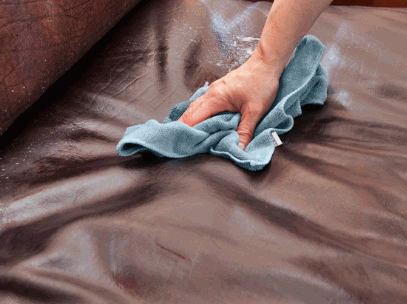
What Cleaning Products Should I Use?
When cleaning your leather sofa, it is crucial to select the right cleaning products that will not damage the leather fabric. Opt for reputable leather cleaners, which are specifically formulated to effectively clean and condition leather without the use of damaging ingredients. Lexol is another trusted brand. Avoid harsh detergents or any commercial products that contain alcohol, as these can strip away the natural oils and cause the leather to dry out and crack. Always patch-test any new product in an inconspicuous area before proceeding with a full treatment to ensure compatibility with your leather type. For expert reviews, consider references from the Institute of Inspection, Cleaning, and Restoration Certification.
Choosing appropriate leather care products is not only about cleanliness but also about maintaining the health and longevity of the leather. High-quality leather cleaners often contain natural ingredients that not only cleanse but also nourish the material.
Here are some key options to consider:
- Leather Honey: Known for its deep conditioning properties, this product helps restore moisture.
- Lexol: A trusted brand that offers both cleaning and conditioning solutions, ensuring comprehensive care.
- Chemical Guys: Offers specialized leather care products catering to various needs, including stain removal.
- Leather Magic: Provides quality leather care products that are widely recommended.
- Leather Master: Known for effective leather treatment solutions.
It’s vital to steer clear of products featuring harmful ingredients like petroleum distillates or ammonia. Instead, sticking to products with natural oils and wax will ensure that the surface remains supple. Always check labels and reviews to confirm efficacy, and remember—consistent maintenance is key to preserving that luxurious leather appeal.
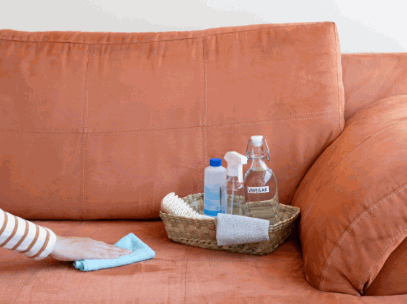
How Often Should I Clean My Sofa?
The frequency of cleaning your leather sofa depends on its usage and exposure to dust, spills, and humidity. Generally, it is advisable to conduct a basic cleaning every 1 to 3 months, ensuring that dust is removed and the leather is conditioned to maintain its softness and appearance. Immediate attention should be given to any spills or stains to prevent permanent damage. Regularly assessing the sofa’s condition can guide you on when deeper cleaning and professional maintenance may be required, thus preserving your leather furniture for years. Routine care is essential for longevity.
To establish an effective cleaning schedule, consider the following factors:
- Usage: If the sofa is in a family room and used daily, more frequent cleaning is recommended compared to one in a formal sitting area.
- Environmental factors: High humidity or dust levels require increased attention, as they can lead to mold or a build-up of dirt.
- Sunlight exposure: Prolonged sun exposure can cause discoloration, necessitating more regular conditioning and cleaning.
As a general guideline, perform a deep clean twice a year, ensuring to use of appropriate leather cleaners and conditioners.
When assessing the sofa’s condition, look for signs such as stiffening, cracks, or discoloration, which may necessitate professional intervention.
Implementing a comprehensive schedule will help maintain the beauty and durability of your leather sofa.
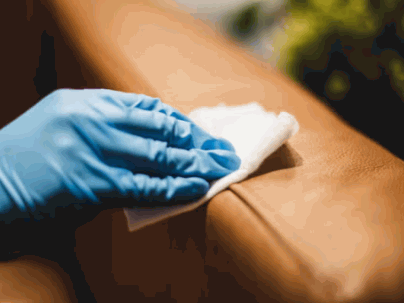
Protecting Your Leather Sofa
Protecting your leather sofa is essential to ensure its longevity and maintain its elegant appearance. Proper care and preventive measures can help shield your leather upholstery from unsightly stains and spills that may otherwise lead to permanent damage. Start by applying a high-quality leather conditioner that includes conditioning oils to create a protective barrier against moisture and dirt. Additionally, consider using slipcovers or throws to safeguard high-wear areas, and always be mindful of placing your sofa away from direct sunlight, as UV rays can fade and deteriorate your leather over time.
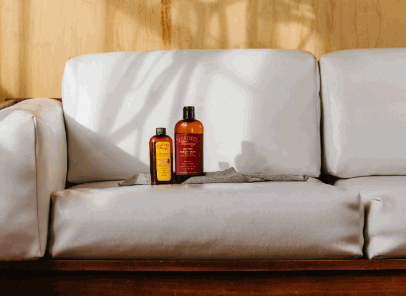
How To Prevent Stains And Spills
Preventing stains and spills on your leather sofa is crucial for maintaining its pristine condition and avoiding costly repairs. Implementing a few simple strategies can significantly reduce the risk of damage. Use coasters for beverages and avoid placing items that may leak or spill directly on the sofa. Consider applying a protective leather spray from reputable brands that repels moisture and dirt, while also enhancing the leather’s natural beauty. Regular cleaning and conditioning will also help to create a barrier against potential stains, thus protecting your investment.
Establishing a routine for cleaning and inspecting your leather furniture can prove beneficial. Here are a few practical tips to keep in mind:
- Use soft, damp cloths for daily dusting to prevent dirt accumulation.
- Always blot spills immediately using a clean, absorbent towel instead of rubbing, which can spread the liquid.
- Invest in quality leather conditioners every few months to maintain the material’s suppleness and resilience.
- For added protection, consider using furniture covers when not in use, which can shield against accidental damage.
Staying proactive with these methods not only preserves the leather’s luxurious appearance but also lengthens its lifespan significantly.
What To Do If A Stain Occurs
In the unfortunate event that a stain occurs on your leather sofa, swift action is necessary to minimize damage and restore its integrity. Begin by gently blotting the stain with a soft cloth to absorb any excess liquid, avoiding rubbing, which can further set the stain. Using a soft microfiber cloth can be particularly effective in this process. Depending on the type of stain, you may need to use a specialized leather cleaner or a diluted cleaning solution. Always follow the manufacturer’s instructions and conduct a patch test on an inconspicuous area before treating the stain directly to prevent adverse reactions to the leather.
Stains can vary widely, ranging from food and drink spills to ink marks, each requiring a different approach. To effectively tackle these issues, it is essential to identify the stain type.
Here are some best practices for dealing with various stains on your Eames lounge chair or other high-end leather furniture:
- Food and Drink Stains: Immediately blot the affected area. A mixture of mild soap and water can be gently applied, followed by a damp cloth to rinse.
- Grease Stains: Sprinkle talcum powder on the stain to absorb excess oil. Leave it for a few hours before wiping it clean with a soft cloth.
- Ink Stains: Dampen a cotton swab with rubbing alcohol and carefully dab at the stain, being mindful not to spread it further.
Timely and careful action is crucial as it not only helps in effectively removing the stains but also maintains the leather’s natural beauty.
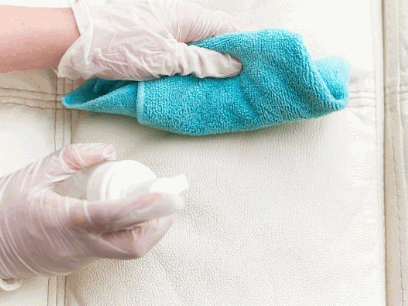
Dealing With Scratches And Fading
According to experts, dealing with scratches and fading on your leather sofa is an essential aspect of maintaining its overall appearance and value. Over time, leather can become worn, leading to unsightly scratches and discoloration caused by exposure to sunlight or wear from use. To address minor scratches, consider using a leather conditioning treatment that not only restores moisture but also helps to conceal imperfections. For deeper scratches or significant fading, professional restoration services may be required to fully revive the leather’s original look and luster. Dealing with scratches and fading on your leather sofa is an essential aspect of maintaining its overall appearance and value.
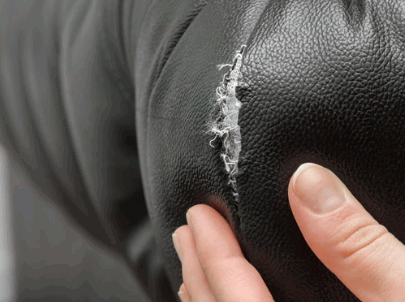
How To Repair Minor Scratches
Repairing minor scratches on your leather sofa can often be accomplished with a few basic leather care products and techniques. Start by cleaning the area around the scratch using a gentle cleaning solution and a soft cloth to remove any dirt or debris. Once cleaned, apply a high-quality leather conditioner to the scratched area, which can help to restore moisture and flexibility to the leather. In some cases, a specialized leather repair kit may provide additional options for filling in and concealing scratches, helping to blend them with the surrounding leather.
To effectively address the scratches, consider following these steps for optimal results:
- First, assess the depth of the scratch to determine the best approach to repair it.
- Next, select appropriate leather repair products designed specifically for your sofa type.
- Afterward, gently massage a leather repair cream into the scratch, using a soft applicator to ensure even coverage.
- Allow the product to dry thoroughly before applying a leather protectant to maintain the sofa’s overall condition.
This ongoing leather treatment is essential, as it not only enhances the appearance but also prolongs the life of your furniture.
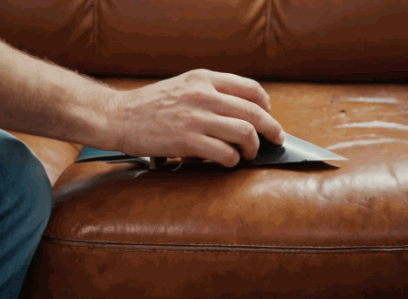
How To Restore Faded Leather
Restoring faded leather can breathe new life into your sofa, enhancing its appearance and ensuring it remains a centerpiece in your home. Along with revitalizing its look, this process helps maintain the integrity and longevity of the leather material.
To effectively restore faded leather, follow these essential steps:
- Step 1: Cleaning the Leather – Begin by using a gentle cleaner specifically designed for leather, which will effectively remove built-up dirt and oils without stripping the material of its natural moisture.
- Step 2: Conditioning – Once the leather is clean, it’s crucial to apply a quality leather conditioner that not only replenishes moisture but also contains pigments that will help restore the leather’s original color.
- Step 3: Assessing Damage – After conditioning, examine the leather for deep cracks or extensive damage. If noticeable areas are still faded after your efforts, you may need to consider seeking professional help.
- Step 4: Professional Restoration – For high-value leather items or significant fading, turn to experts who specialize in leather restoration techniques to ensure optimal results.
By following these straightforward steps, one can effectively revitalize faded leather, ensuring it adds elegance and comfort to any space.
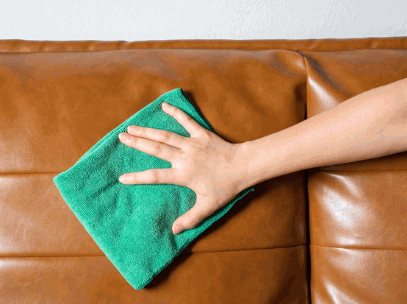
Long-Term Care For Your Leather Sofa
Experts emphasize that long-term care for your leather sofa is critical to ensuring its durability and aesthetic appeal throughout the years. Regularly moisturizing the leather with a suitable conditioner not only prevents drying and cracking but also enhances its natural sheen and softness. Additionally, keeping your sofa in a controlled environment, away from excessive humidity and direct sunlight, will help prolong its lifespan. In cases where your leather requires extensive care or restoration, seeking professional help can be a worthwhile investment to maintain its luxurious appearance. Long-term care for your leather sofa is critical to ensuring its durability and aesthetic appeal throughout the years. Regularly moisturizing the leather with a suitable conditioner not only prevents drying and cracking but also enhances its natural sheen and softness. Additionally, keeping your sofa in a controlled environment, away from excessive humidity and direct sunlight, will help prolong its lifespan. In cases where your leather requires extensive care or restoration, seeking professional help can be a worthwhile investment to maintain its luxurious appearance.
Keeping Your Sofa Moisturized
Keeping your leather sofa moisturized is essential for preventing dryness and maintaining its soft texture, ensuring its longevity. Moisturizing leather is crucial for preserving its appearance and preventing cracks that can mar even the most beautiful furniture.
To select the right conditioner, look for products that are free of harsh chemicals and specifically formulated for the type of leather you have. It’s important to become familiar with the
- different kinds of leather, such as aniline, semi-aniline, and pigmented
- to ensure proper care
. When applying your chosen conditioner, follow these steps:
- Test the conditioner on a hidden spot to ensure compatibility.
- Use a soft, clean cloth to apply a small amount smoothly.
- Allow it to dry before using the sofa.
Signs that your leather needs more frequent conditioning include visible cracks, a dull appearance, or a rough texture. Adjust your routine accordingly, maintaining an appropriate balance to keep your leather looking its best.
When To Seek Professional Help
Knowing when to seek professional help for your leather sofa can save you time and prevent further damage to your investment. If you encounter significant scratches, deep stains, or extensive fading that cannot be addressed through regular cleaning and maintenance, it may be time to consult a leather treatment expert. If your leather shows signs of severe drying or cracking, professional restoration can rejuvenate the leather’s appearance and prolong its lifespan.
Recognizing the indicators of deterioration is crucial in maintaining the long-term integrity of leather furniture. Common signs prompting professional intervention include:
- Visible Cracks: If the leather begins to crack or lose its natural suppleness, it indicates a lack of moisture that routine care cannot remedy.
- Persistent Odors: Foul smells can signal trapped moisture or mold, both of which require specialized treatments.
- Stubborn Stains: Some stains may resist typical cleaning methods, necessitating expert stain removal services.
Professional leather care services encompass a variety of treatments, such as:
- Deep Conditioning: This process restores moisture and elasticity to the leather, enhancing its durability and appearance.
- Surface Repair: Experts can address scratches and abrasions effectively, ensuring a seamless look.
- Color Restoration: Fading can be remedied through specialized dyes, rejuvenating the sofa’s visual appeal.
Ultimately, leveraging expert services not only protects your investment but also maintains the comfort and style of your leather sofa.
Conclusion: Enjoying Your Leather Sofa For Years To Come
Enjoying your leather sofa for years to come is achievable if you commit to regular care and maintenance practices tailored to your specific leather type. By understanding how to clean, condition, and protect your leather furniture, you can significantly extend its lifespan and maintain its luxurious appearance. Whether you’re dealing with an Eames lounge chair or a Hess leather sofa, implementing the right strategies ensures that your investment remains a beautiful centerpiece in your living space for many years ahead.
Taking the time to incorporate proper techniques not only keeps your leather looking brand new but also enhances its comfort and durability. Here are some key practices that can help:
- Regular Cleaning: Dusting and vacuuming the surface will prevent dirt buildup.
- Conditioning: Use a quality leather conditioner periodically to keep the material hydrated and prevent cracking.
- Protection: Applying a leather protector can guard against stains and spills, making maintenance much easier.
By following these simple tips and embracing a proactive approach to leather care, you can enjoy the elegance and comfort of your sofa for a lifetime, truly reflecting your style and lifestyle.
